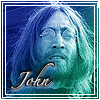Post by New York City on Jul 8, 2008 20:33:51 GMT 1
A History: Tomorrow Never Knows
John Lennon wrote the song in January 1966, closely adapted from the book The Psychedelic Experience by Timothy Leary, Richard Alpert, and Ralph Metzner, which they based on, and quoted from, the Tibetan Book of the Dead, with the understanding that the "ego death" experienced under the influence of LSD and other psychedelic drugs is essentially similar to the dying process and requires similar guidance.
Peter Brown claimed that Lennon's only source of inspiration for the song came from the Tibetan Book of the Dead, which it says Lennon read whilst tripping on LSD. George Harrison later stated that the idea for the lyrics came from Leary, Alpert, and Metzner's book. McCartney confirmed this by stating that he and Lennon once visited the newly opened Indica bookshop as Lennon was looking for a copy of The Portable Nietzsche and Lennon found a copy of The Psychedelic Experience, which quoted the lines: "When in doubt, relax, turn off your mind, float downstream". Lennon bought the book, went home, took LSD, and followed the instructions exactly as stated in the book.
Lennon first played the song to Brian Epstein, George Martin and the other Beatles at Epstein's house at 24 Chapel Street, Belgravia. McCartney remembered that even though the song was only one chord of C, Martin accepted it as it was, and even said that it was, "rather interesting". The song's harmonic structure is derived from Indian music, and is based upon a C drone. The "chord" over the drone is generally C major, with some changes to B flat major.
Lennon told producer Martin that he wanted it to sound like a hundred chanting Tibetan monks, which left Martin the difficult task of trying to find the effect by using the basic equipment they had. Lennon's suggestion was that he be suspended from a rope and after being given a good push, he would sing as he spun around the microphone. (This idea was rejected by Martin, but when asked by Lennon about it, he would only reply with, "We're looking into it"). Emerick finally came up with the idea to wire Lennon's voice through a Leslie speaker, thus obtaining the desired effect, and without the need of a rope. The effect was achieved by putting Lennon's vocal through the cabine which meant Emerick having to break into the electronic circuitry of the cabinet and then re-recording the vocal as it came out of the revolving speaker. This created a vibrato effect that was normally used for a Hammond organ.
The track was one of the first pieces of psychedelic rock, including highly compressed drums with reverse cymbals, reverse guitar, processed vocals, looped tape effects, a sitar and a tambur drone.
John Lennon wrote the song in January 1966, closely adapted from the book The Psychedelic Experience by Timothy Leary, Richard Alpert, and Ralph Metzner, which they based on, and quoted from, the Tibetan Book of the Dead, with the understanding that the "ego death" experienced under the influence of LSD and other psychedelic drugs is essentially similar to the dying process and requires similar guidance.
Peter Brown claimed that Lennon's only source of inspiration for the song came from the Tibetan Book of the Dead, which it says Lennon read whilst tripping on LSD. George Harrison later stated that the idea for the lyrics came from Leary, Alpert, and Metzner's book. McCartney confirmed this by stating that he and Lennon once visited the newly opened Indica bookshop as Lennon was looking for a copy of The Portable Nietzsche and Lennon found a copy of The Psychedelic Experience, which quoted the lines: "When in doubt, relax, turn off your mind, float downstream". Lennon bought the book, went home, took LSD, and followed the instructions exactly as stated in the book.
Lennon first played the song to Brian Epstein, George Martin and the other Beatles at Epstein's house at 24 Chapel Street, Belgravia. McCartney remembered that even though the song was only one chord of C, Martin accepted it as it was, and even said that it was, "rather interesting". The song's harmonic structure is derived from Indian music, and is based upon a C drone. The "chord" over the drone is generally C major, with some changes to B flat major.
Lennon told producer Martin that he wanted it to sound like a hundred chanting Tibetan monks, which left Martin the difficult task of trying to find the effect by using the basic equipment they had. Lennon's suggestion was that he be suspended from a rope and after being given a good push, he would sing as he spun around the microphone. (This idea was rejected by Martin, but when asked by Lennon about it, he would only reply with, "We're looking into it"). Emerick finally came up with the idea to wire Lennon's voice through a Leslie speaker, thus obtaining the desired effect, and without the need of a rope. The effect was achieved by putting Lennon's vocal through the cabine which meant Emerick having to break into the electronic circuitry of the cabinet and then re-recording the vocal as it came out of the revolving speaker. This created a vibrato effect that was normally used for a Hammond organ.
The track was one of the first pieces of psychedelic rock, including highly compressed drums with reverse cymbals, reverse guitar, processed vocals, looped tape effects, a sitar and a tambur drone.







